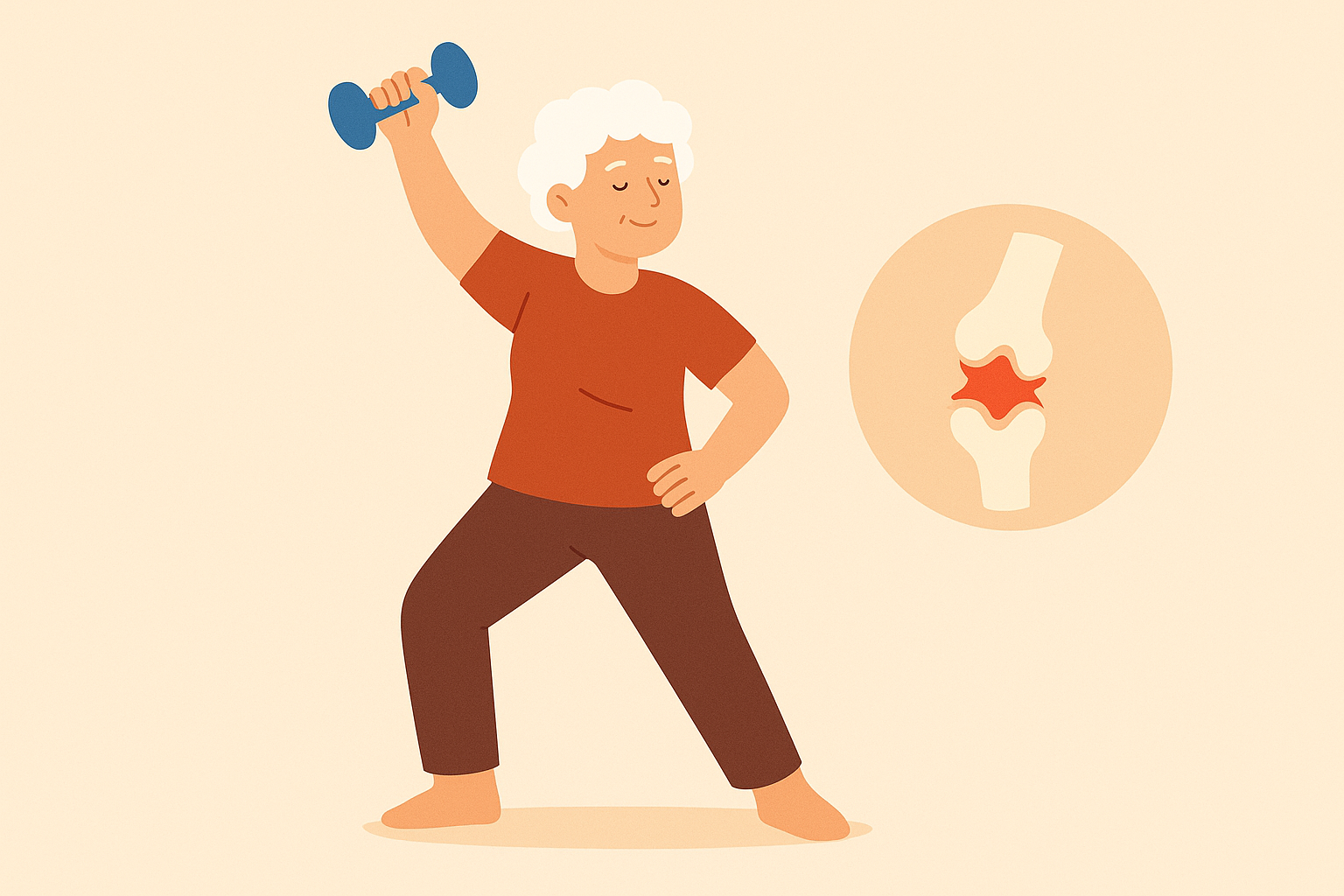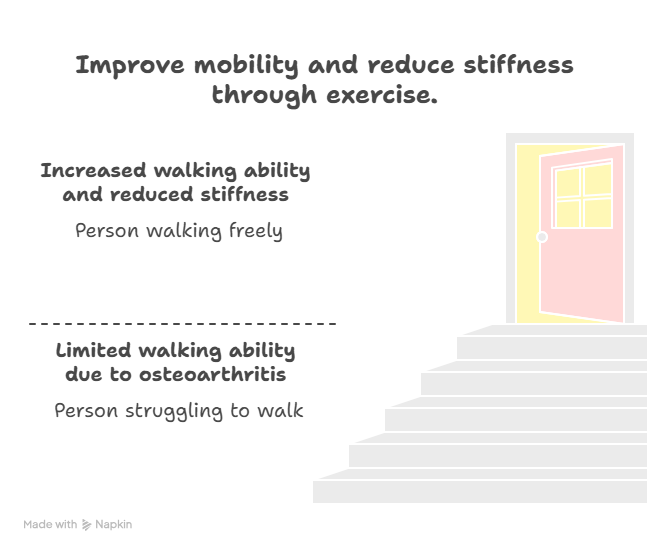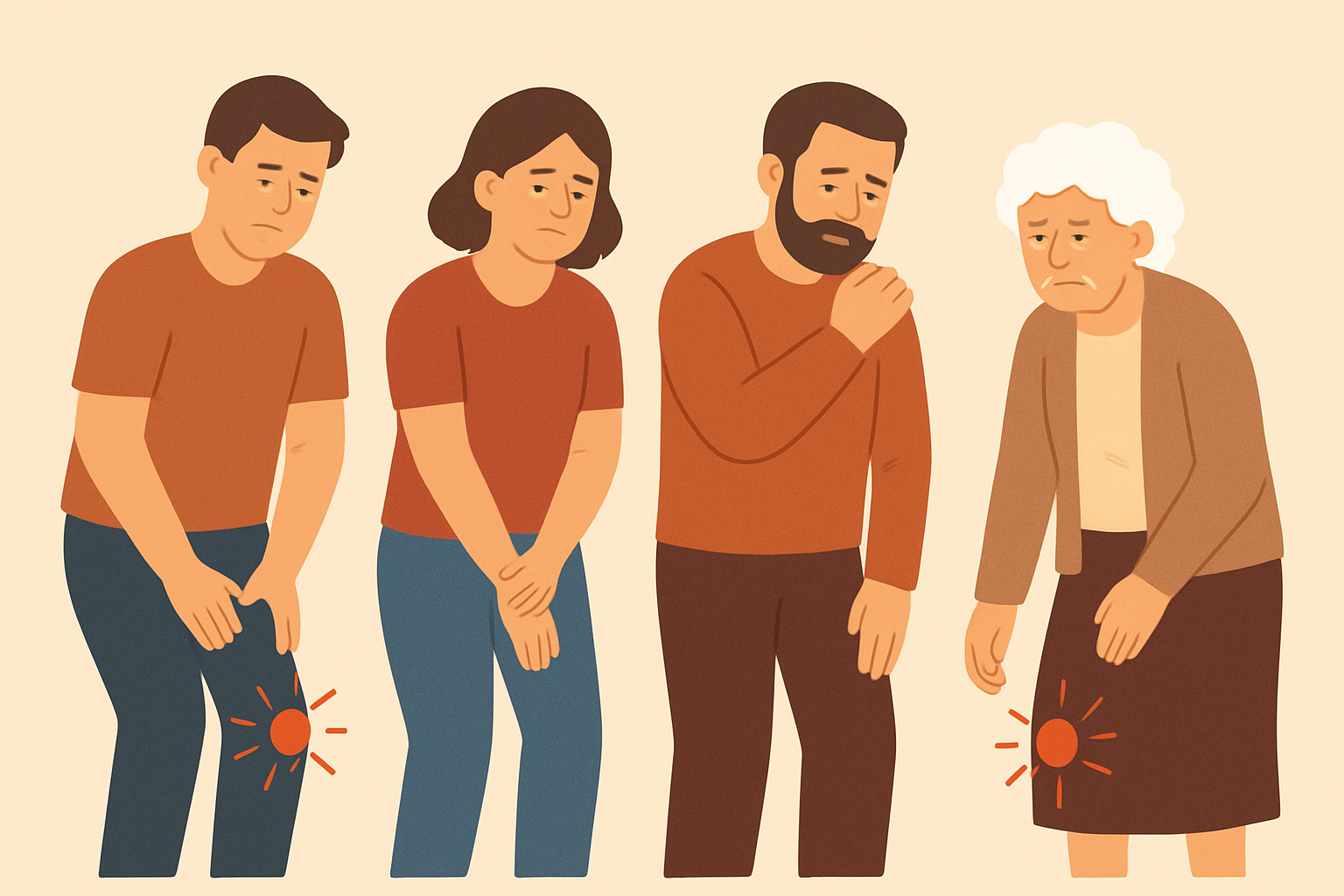
How Gentle Exercise Actually Protects Your Joints
For years, people with arthritis have been told to “rest their joints” and “avoid too much movement.” This advice, though well-intentioned, has caused more harm than good.
Modern research shows that doing gentle, regular exercise with arthritis is one of the most effective ways to reduce pain, improve mobility, and slow disease progression. When performed safely and mindfully, exercises with arthritis can actually nourish your joints — not damage them — helping you move more freely and live with greater confidence and comfort.
According to the Mayo Clinic,
exercise “helps ease arthritis pain and stiffness,”
improving joint strength and flexibility rather
than worsening symptoms.
(Source: Mayo Clinic – Arthritis and Exercise)
Debunking the Myth – "Exercise Makes Arthritis Worse"
Why this myth continues: fear of pain; fear of chronic inflammation; conservative recommendations. How inactivity affects arthritis pain symptoms: inactivity leads to weakness of the muscles supporting the joints, which leads to instability in the joint, which leads to arthritis pain, and ultimately leads to further inactivity. Interesting fact: The Mayo Clinic states, “Exercise helps ease arthritis pain and stiffness.“
What the Research Says
Key findings: A literature review on OA from 2022 concluded that exercise is effective in reducing harmful changes. PMC
Recent meta-analysis: Physical activity and weight management is key for knee/hip OA. JRheum
Real-world application: The benefits of movement applies to all ages and all kinds of arthritis when done safely and in the right way. Key take–home message: Movement is not the enemy — often, lack of movement is.
How Movement Protects Your Joints
Strengthens muscles around the joints → better stability around the joint + less impact. Improves nutrition of the joints through improved circulation → better overall cartilage health. Reduces markers of inflammation, while promoting healthier metabolism. Raises mood and changes perception of pain (mind-body connection). For example: A yoga vs. strength–training trial in individuals with knee OA showed that both groups had a reductions in pain after 12 weeks. JAMA Network.
Safe & Smart Exercise Guidelines
As always, check with your doctor/physio before starting any exercise routine. Focus on three categories: Range of motion – slower slides and rotations through your joints. Strengthening – light resistance bands, body-weight exercises. Aerobic / low impact cardio – walking, cycling, swimming. Frequency suggestion: 3–5 days every week for 20–30 minutes each day. Be gradual: Start at a low intensity → increase as you feel more comfortable. To protect yourself while exercising: Warm up before, listen to your body and stop if experiencing sharp pains, make sure you are wearing supportive shoes and any other supporting equipment. Combine all movement with rest, hydration and nutrition for the best results.
A Sample Weekly Routine (Beginner Friendly)
| Day | Activity | Time | Focus |
|---|---|---|---|
| Mon | 5 min warm-up + 10 min brisk walk + 5 min cool down stretches | 20 min | Aerobic & warm-up |
| Wed | 5 min joint circles + 2 sets of 10 squats (chair assisted) + 5 min hamstring stretches | 20 min | Strength + ROM |
| Fri | 5 min warm-up + 15 min gentle cycling or swimming + 5 min upper-body stretches | 25 min | Low-impact cardio |
| Sun | 10 min gentle yoga or mindfulness-stretch sequence | 10 min | Flexibility & relaxation |
Note: Adjust times and intensity as per your comfort level.
Real Stories of Success
“When I first got diagnosed with osteoarthritis in my knees, I barely managed 10 minutes of walking. With simple exercises I picked up here, I now walk 30 minutes, 4 times a week — and my stiffness has reduced.” — Sheela Amma, Bengaluru

FAQs on Exercises with Arthritis
Q1: Can exercise make arthritis worse?
A: If the plan is too intense, unsupervised or uses poor technique, yes there is a risk of flare-ups. But when tailored and gradual, exercise does not worsen arthritis — in fact, it improves pain, function and joint health. – Mayo Clinic
Q2: What types of exercise are safe for arthritis?
A: Low to moderate-intensity aerobic activity (walking, cycling), strength training (light weights, resistance bands), flexibility/ROM exercises (joint slides, yoga) are safe when done correctly. Consult your physiotherapist for guidance.
Q3: How often should I exercise if I have arthritis?
A: Ideally 3–5 days per week, with a mix of aerobic, strength and flexibility work. Even short sessions (20–30 minutes) are beneficial. Increase gradually based on tolerability.
Q4: Will exercise eliminate my joint pain completely?
A: Exercise is a powerful tool for reducing pain, improving mobility and enhancing quality of life — but it may not fully eliminate all pain or stop disease progression. It should complement, not replace, other treatments.
Q5: Is there a best age or arthritis type for starting exercise?
A: No — people of all ages and arthritis types (osteoarthritis, rheumatoid, etc.) benefit from safe exercise. The key is to customise the routine to your condition, fitness level and preferences.
How to Get Started with PainPal
-
Browse our Physiotherapy & Exercise section for guided routines and demonstration videos.
-
Download our free “Movement for Joints” checklist (link).
-
Join our community in Arthritis Warriors’ Stories to stay motivated and share your progress.
Conclusion on "Exercises with Arthritis"
Exercise is not the “risk” many believe it to be — when done right, it’s one of the most effective tools to protect your joints, reduce pain and reclaim movement. Through guided, gentle and consistent movement, you can turn the tide on arthritis’s impact. At PainPal, we believe healing happens when science meets motion, and every step, however small, matters. Start today, move a little, and keep going — your joints will thank you.

